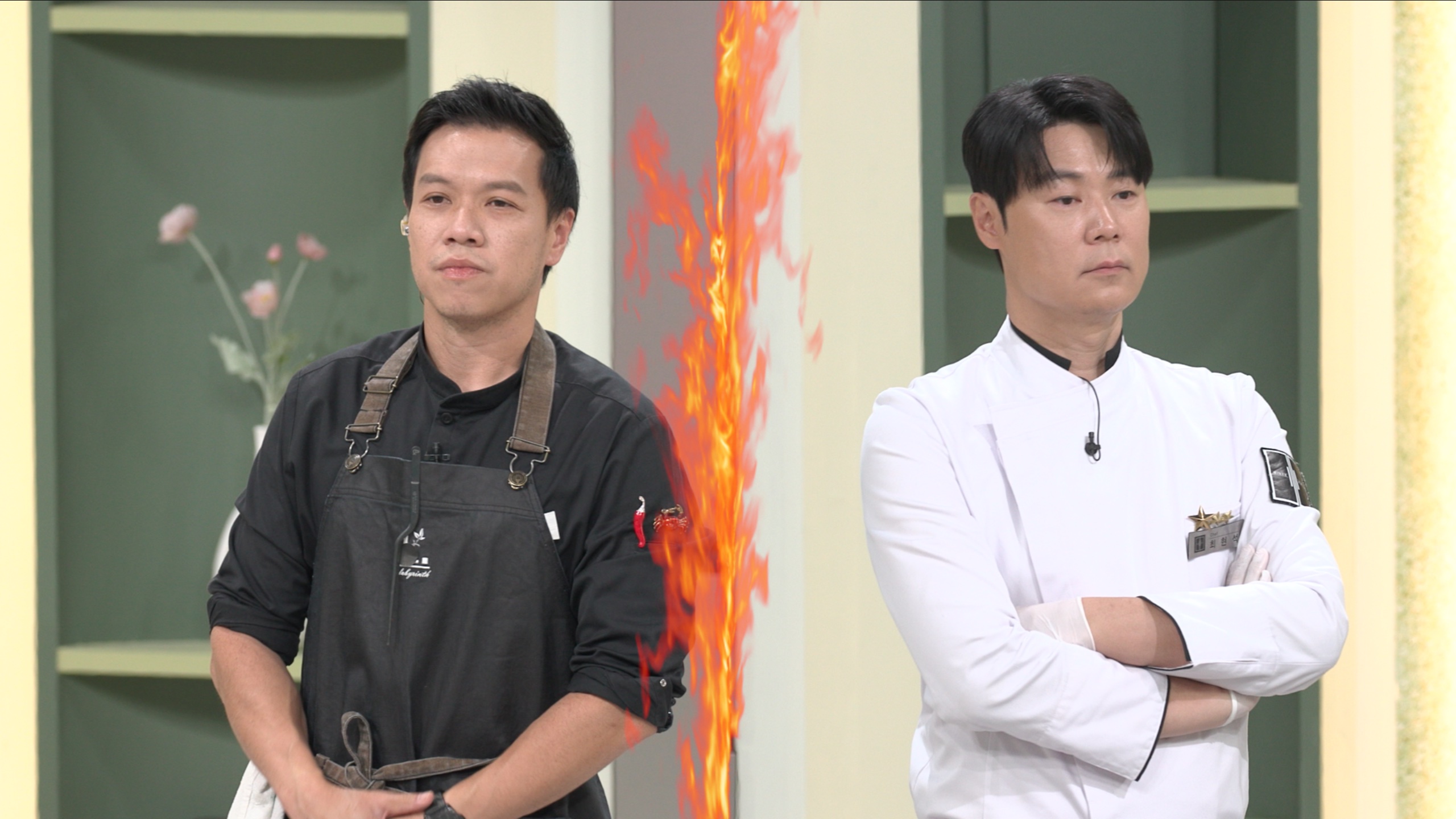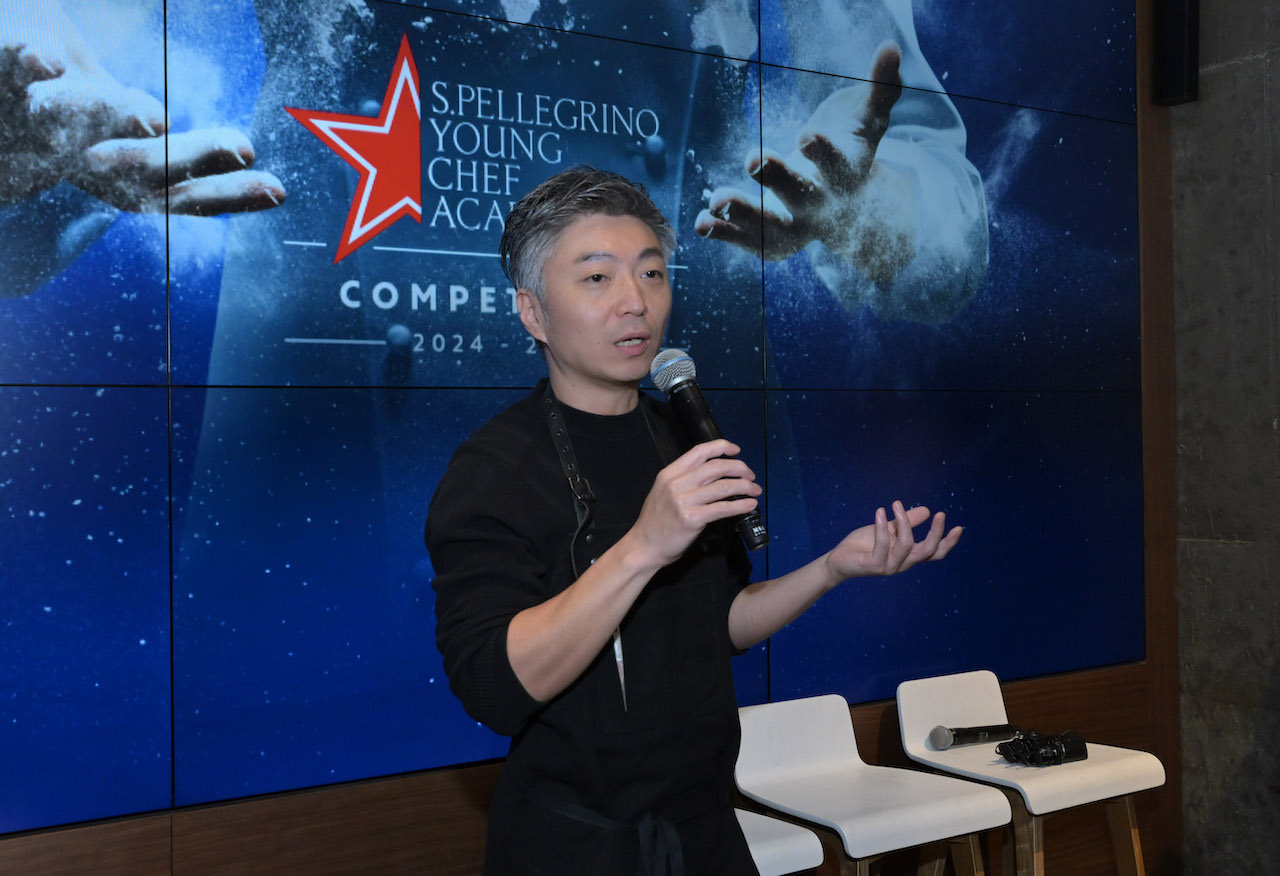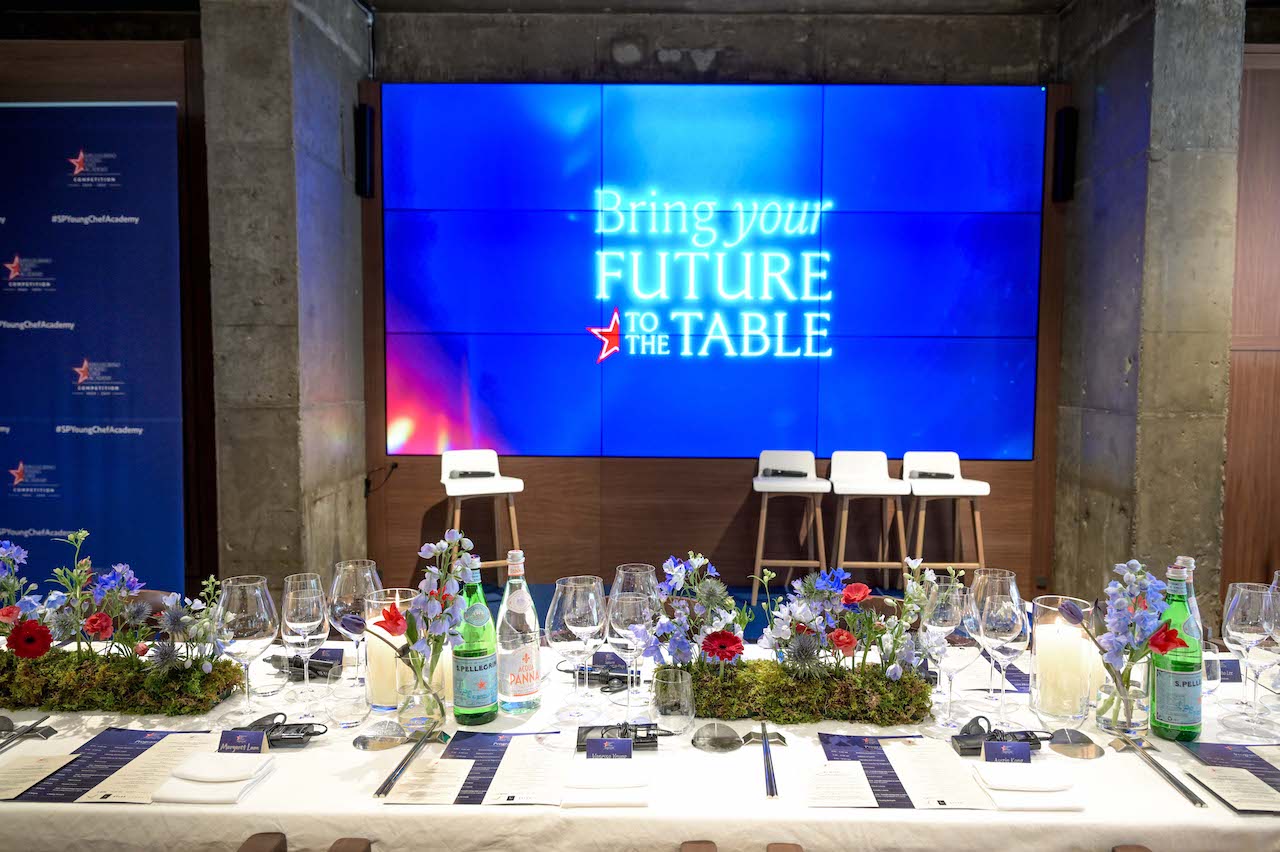Asia’s rise as a culinary hub of the future, according to top chefs Han Liguang and Richie Lin.
Text by Amy Van
In March, S.Pellegrino Young Chef Academy SPYCA invited young chefs, mentor chefs and judges for a special luncheon in Seoul. The purpose was to bring their future to the table through a panel discussion on the theme ‘Asia: Transforming into a Culinary Hub of the Future’.
After the event, we caught up with top chefs Han Liguang of Labyrinth, Singapore (No.37 on Asia’s 50 Best Restaurants) and Richie Lin of Mume in Taipei (No. 51 Asia’s 50 Best Restaurants) to garner their insights on Asia’s impact on the global dining scene, and their thoughts on sustainability issues.

Han Liguang, chef-owner, Restaurant Labyrinth
How do you think Asia is impacting the global dining scene, and how is our region transforming into a culinary hub of the future ?
As a Singaporean I’ll always be proud of our vibrant and diverse culinary scene – I truly believe Singapore will continue to be a key culinary hub in Asia. Hong Kong remains a major player too, with its deep-rooted gastronomic culture. But what’s really exciting is how we’re seeing the emergence of two new culinary powerhouses in Asia.
Seoul is definitely one to watch. The Korean culinary movement has gained incredible momentum, not only regionally but around the world, and more Korean culinary talents are finding success on the international stage. Then there’s Bangkok, which has long been home to some of the world’s best restaurants and continues to evolve creatively.
What’s driving this broader regional rise, though, is twofold. Firstly, the influence of social media and increased global accessibly is changing the game – people are now more willing to explore cities they might’ve overlooked before, like Mumbai or Vietnam. There’s a growing curiosity about local street food culture and regional flavours that are deeply rooted in heritage.
Secondly, from a fine dining and gastronomical perspective, we’re seeing a real spotlight on local talent and cuisine thanks to platforms like Asia’s 50 Best and Michelin Guide. As more restaurants from these cities make it onto these lists, they naturally draw attention from the global food community. It’s not just about prestige – it’s also about people genuinely wanting to experience these places through food, that’s why cities like Shanghai and Mumbai are growing in prominence, and others are gaining traction so quickly.
It’s such an exciting time for Asia’s culinary landscape – there’s a real sense of momentum and evolution, and it’s amazing to see more cities stepping into the spotlight.

How important are sustainability issues now compared to more than 10 years ago when you launched Labyrinth?
Over the past 10 years, I’ve seen the definition and execution of sustainability evolve – not just for the industry at large, but for us at Labyrinth as well. Our first iteration back in 2017 focused a lot on locavorism, sourcing ingredients entirely from within Singapore. We’ve since pivoted that idea into what I call ‘cultural sustainability’ – which is the preservation of our local food heritage.
Our latest menu, for example, focuses on reviving lost or forgotten heritage dishes. It’s about reconnecting the current generation with the flavours of the past, and making them more aware of our roots. Food is a powerful vehicle for identity, and through our menu, we hope to pass down a sense of who we are as Singaporeans to the next generation – so that those traditions aren’t lost.
So yes, sustainability is multi-faceted. But at the heart of it, it has to be anchored in a viable business model – because only then can we continue to evolve, support our community, and preserve the stories that matter.
___
Richie Lin, chef-owner, Mume, Taipei

How is Asia transforming into a culinary hub of the future and why? And how does Taiwan contribute to this?
Asia is rapidly transforming into the culinary hub of the future for several compelling reasons. Firstly, cultural depth meets innovation: Asia has a rich and diverse culinary heritage, from centuries-old traditions in Japan and China to the vibrant street food cultures of Southeast Asia. But what’s remarkable now is how young chefs are reinterpreting this heritage with global techniques, sustainability mindsets, and avant-garde creativity. This fusion is creating a truly new kind of gastronomy that’s both rooted and progressive.
Global attention and recognition: The world’s food media, awards, and luxury travellers are increasingly turning their eyes to Asia — not just to visit, but to discover the next big thing. Initiatives like the Asia’s 50 Best Restaurants list and Michelin Guides in cities like Bangkok, Seoul, and Tokyo are spotlighting regional talents and driving culinary tourism across the continent.
Local ingredients, world-class execution: Asia is blessed with biodiversity — everything from the spices of South India to the seafood of Hokkaido. Chefs are leaning into local sourcing, regenerative agriculture, and forgotten ingredients to tell unique stories that resonate globally. Taiwan plays a significant role in this movement; it may be small geographically, but its impact is growing sharply on the international culinary map.
Ingredient-driven cuisine: Taiwan has some of the best seasonal produce, heritage soy sauces, tea culture, and seafood in Asia. Chefs like myself, André Chiang, and others are showcasing Taiwan’s terroir through modern, world-class techniques.
Freedom to experiment: Unlike more rigid culinary scenes, Taiwan offers a degree of creative freedom and cultural openness that lets chefs experiment without being overly bound by tradition or market pressure.
Strategic location and market: Taiwan is well-positioned to be a gateway between Northeast Asia and Southeast Asia, both in terms of culinary cross-pollination and as a testbed for forward-thinking food concepts — from plant-based dining to fine-casual formats.
Growing global recognition from international rankings to international rankings to Taiwan’s rising visibility in documentaries and culinary tourism, the island is being recognised not just as a food destination, but as a cultural innovator. Asia isn’t just catching up to the West — it’s redefining the future of fine dining, sustainability, and food storytelling. Taiwan plays a key role by offering both world-class ingredients and a spirit of innovation that makes it one of the most exciting places to cook and eat today.

How challenging will it be for young chefs wanting to join the culinary world – especially during uncertain times? What advice do you have for them?
It’s definitely a challenging time for young chefs — the industry is evolving fast, with rising costs, shifting consumer habits, and a stronger push for sustainability and work-life balance. But challenges also bring opportunity. The culinary world is more open than ever to new ideas, cultural voices, and creative formats.
My advice? Stay curious, stay humble, and stay rooted. Build a strong foundation by learning the craft—whether in kitchens, farms, or markets. But don’t be afraid to question the old rules. Find your own voice, understand your local culture deeply, and use food as a way to tell meaningful stories. That’s what the world is looking for today.

As a pioneer in the use of underrated Taiwanese ingredients and zero-waste cooking practices, how important are sustainability issues in Taiwan presently compared to 10 years ago? Have you changed any of your zero waste practices in recent years?
Sustainability in Taiwan has evolved remarkably over the past decade. Ten years ago, sustainable practices were niche and often overlooked. Today, there’s a growing awareness among consumers and the industry about environmental responsibility. At MUME, we’ve always prioritised sustainability, but this shift has encouraged us to delve deeper. For instance, we’ve refined our zero-waste initiatives by meticulously tracking our waste output, aiming to produce no more than two bags of rubbish daily. We’ve also embraced a nose-to-tail approach, ensuring every part of an ingredient is utilized, from proteins to vegetables.
Moreover, we’ve recognised the importance of our team’s well-being in our sustainability journey. Implementing a 4.5-day workweek and offering paid training opportunities are steps we’ve taken to foster a sustainable working environment. These practices not only benefit our staff but also enhance the overall dining experience for our guests.
In essence, sustainability isn’t a static goal but a continuous journey. As Taiwan’s culinary scene grows more conscious, we’re committed to evolving and setting new standards in sustainable dining.
